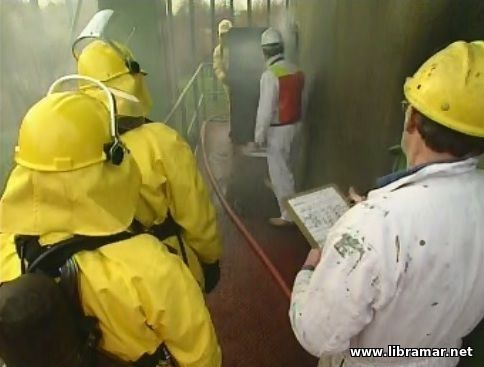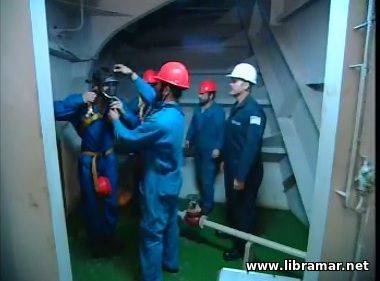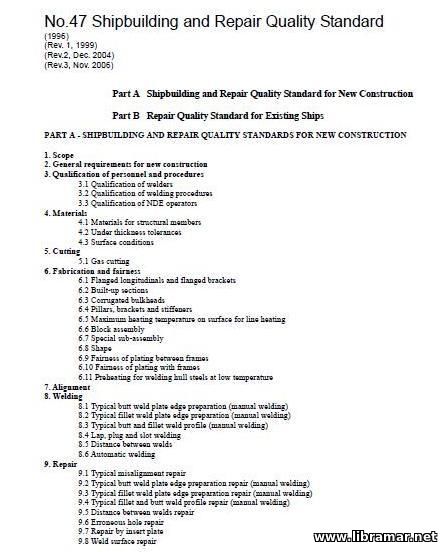Holding Effective Drills

An accident can happen at any time while you are serving on any ship. If an unexpected event does happen, crew members shall always be ready and know what is expected of them. Drills are a mandatory part of shipboard life; they shall help build teamwork and confidence. But eyewitness reports from port state authorities have discovered that too often crew members are unfamiliar, hesitant, unconcerned or use poor techniques when forced into this kind of situation.
That is why holding effective drills is so important. If drills are carried out realistically, the knowledge obtained will enable crew members to handle real situations promptly and ensure a positive outcome. Crew members should remember that holding effective drills is not just a task undertaken to conform to regulations - effective drills are designed to save lives. Of course, simulating real situations to obtain knowledge is difficult and can be dangerous.
But these trainees are obtaining first-hand knowledge before setting out to sea. A drill is a way of testing your knowledge. A review of that test will indicate any areas for further training. With the number of new stories of accidents involving vessels, it has become evident that drills have not always been effective; crews were not responding quickly enough, they used poor techniques and they lacked the knowledge and understanding of their role in the real life incident.
But not all stories end in tragedy. Because of a fire on the ship the passengers were swiftly and efficiently put to sea in lifeboats with no reported casualties. Although the ship is not full, nonetheless the crew responded correctly and everyone was safe. To make sure that ships are performing drills effectively, the port state authorities can board the vessel at any time and ask them to carry out a drill. On many occasions, they have witnessed a number of bad practices. Each crew member must participate in at least one abandon ship drill and fire drill every month. Each will have an assigned duty when the alarm starts.
Drills involving lifeboats and liferafts should be as realistic as possible. Crew members other than those who cannot be released from normal duties, should muster to their station wearing lifejackets and appropriate clothing. Lifeboat should be launched at least once every six months depending on a vessel. For safety reasons, this should be carried out in port, again depending on a lifeboat. Often, problems arise such as safety during retrieval of the lifeboat; treat this as part of the drill. Never raise the lifeboat with more than three people inside.
Crew members, when joining a ship, undertake a familiarization program. This informs them about their muster station, their duties should an emergency arise, and familiarizes them with the equipment that vessel carries. Their life depends on knowing.
At each fire drill at least one extinguisher should be discharged by different crew member so that all the team gains experience.
Over a period of time, the drill should be designed so that each crew member should at least have a go at working the equipment. They may be called upon to use it in an emergency situation although they may not be assigned that duty. Each crew members should have been instructed, in turn, in the use of whatever equipment is needed for that eventuality.
 Here, the members are doing the enclosed space drill where a fellow crew member is unconscious. Again, it is a realistic situation. They have to retrieve as quickly as possible using the appropriate equipment. Have you entered an enclosed space quickly and correctly? Knowing how could mean the difference between life and death. Even down to the simplest of instructions, the correct way to close doors, side scuttles and other openings - do you know how and when?
Here, the members are doing the enclosed space drill where a fellow crew member is unconscious. Again, it is a realistic situation. They have to retrieve as quickly as possible using the appropriate equipment. Have you entered an enclosed space quickly and correctly? Knowing how could mean the difference between life and death. Even down to the simplest of instructions, the correct way to close doors, side scuttles and other openings - do you know how and when?
All drills should be done in a correct manner. If you do not know the correct procedures, how can you instruct the passengers? Their lives and yours will depend on your knowing. Briefings should be held before you embark on any drill training exercise; they help you to understand what is expected of you, the reason the drill is being undertaken, and what you can and cannot do. They should also include going over the notes of the last drill and discussing how you could improve it.
Fire drills require understanding as there are many types of fires requiring different means of extinguishing them. By altering the type of fire and its location or even the only means of entrance other than the usual entrance, you will have a fire party that is not only capable but also knowledgeable in what actions to take. Add realism to the drill wherever possible. Fires do not necessarily happen during the working day. Authenticity will help the crew experience, as far as possible, a true life event. Drill should be carried out effectively, approaching emergency conditions. Adding realism to the drill will help to prepare the seamen in the event of a real life emergency.
Not all the ships are equipped with smoke machines to simulate the fire. Simply blacking out the crew members mask will help to simulate the dense smoke effect. Good housekeeping on board is also vital. In one incident, a fire team trying to get an access to the fire, were horrified to find several oil drums blocking their route. These had to be removed before the fire could be tackled. This example demonstrates that not only has the drill to be carried out properly, but so do the ship's normal operations.
Fire drill exercises should be taken through to their conclusion. This should include the preparation of the emergency water pumps for action and laying out the fire hoses; wherever possible, water should be played through them, and that applies also to the hoses that you do not normally use. At all drills an allocated trained person should observe the crew's actions, making notes to provide feedback at the de-briefing. The observer should also check on the safety of the crew's actions. Accidents can sometimes occur during a drill, so it is important that someone outside the drill is at hand should difficulties arise. Drills themselves will of course help to limit this.
To understand further how the actions of the crew are rated, de-briefings help to interpret how well the exercise went. Those taking part in the exercise should be encouraged to give feedback. This helps to understand the meaning of your own and your fellow crew members actions. De-briefings are an effective way of understanding the problems that may have occurred during the drill and of helping to prevent them arising at the next drill or, more importantly, in a real emergency. They also help to understand the dangers than could arise from a drill itself. Discussing the safety issues should be of paramount importance.
Drills that are repeated, modified, and held at different times, will make the crew not only knowledgeable but also able to respond to a real life emergency. A drill is a way of testing your knowledge - a review of the test will indicate any areas for further training. We learn by training, we learn by experience, and we learn from mistakes - talk about them and learn as your life depends on it!
The "Read Later" function allows you to add material to this block with just one click. Just click on the icon and read the articles that interest you at any convenient time.


